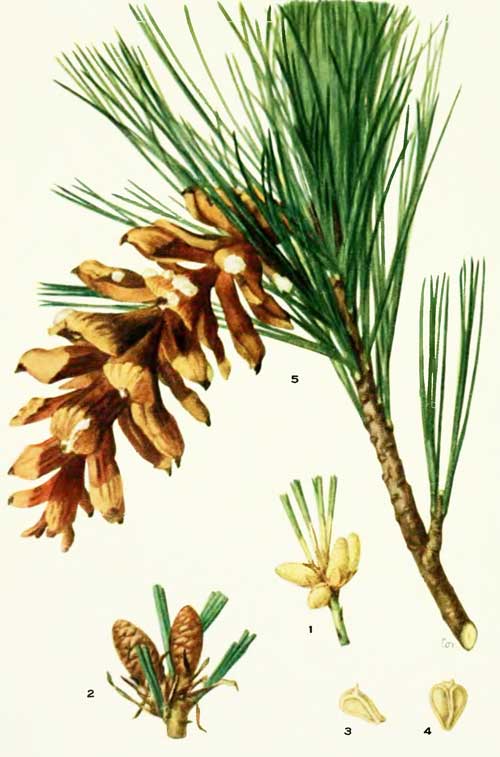
Pinus peuce
Superregnum: Eukaryota
Regnum: Plantae
Divisio: Tracheophyta
Divisio: Pinophyta
Classis: Pinopsida
Ordo: Pinales
Familia: Pinaceae
Genus: Pinus
Subgenus: P. subg. Strobus
Sectio: P. sect. Quinquefoliae
Subsectio: P. subsect. Strobus
Species: Pinus peuce
Name
Pinus peuce Griseb.
References
Spicilegium Florae Rumelicae et Bithynicae Exhibens Synopsin Plantarum quas in aest (1839). legit Auctor A. Grisebach 2: 349 (-350), (1845).
Richardson, D. M. (ed.). (1998). Ecology and Biogeography of Pinus. Cambridge University Press.
Vernacular names
беларуская: Хвоя румелійская
български: Бяла мура
català: Pi de Macedònia
čeština: Borovice rumelská
Cymraeg: Pinwydden Macedonia
dansk: Silke-Fyr
Deutsch: Rumelische Kiefer
dolnoserbski: Rumelska chójca
Ελληνικά: Βαλκανικό πεύκο
English: Macedonian Pine
español: Pino de Macedonia
eesti: Rumeelia mänd
suomi: Makedonianmänty
français: Pin de Macédoine
hrvatski: Molika
hornjoserbsce: Rumelska chójna
magyar: Balkáni selyemfenyő
íslenska: Balkanfura
italiano: Pino della Macedonia
перем коми: Румелияись пожум
lietuvių: Balkaninė pušis
македонски: Молика
Nederlands: Macedonische den
norsk: Silkefuru
polski: Sosna rumelijska
پنجابی: مقدونیہ دا چیڑ
português: Pinheiro-da-Macedónia
русский: Сосна румелийская
srpskohrvatski / српскохрватски: Molika
српски / srpski: Молика
svenska: Makedonisk tall
удмурт: Румелиысь пужым
українська: Сосна румелійська
Tiếng Việt: Thông Macedonia
Pinus peuce (Macedonian pine[2] or Balkan pine[3]) (Serbo-Croatian/Macedonian: молика, molika; Bulgarian: бяла мура, Byala mura) is a species of pine native to the mountains of Macedonia, Bulgaria, Albania, Montenegro, Kosovo,[a] the extreme southwest of Serbia, and the extreme north of Greece,[4][5][6] growing typically at (600-) 1,000-2,200 (-2,300) m altitude. It often reaches the alpine tree line in this area. The mature size is up to 35–40 m height, and 1.5 m trunk diameter.[4][5] However, the height of the tree diminishes strongly near the upper forest limit and may even obtain shrub sizes.[7]
It is a member of the white pine group, Pinus subgenus Strobus, and like all members of that group, the leaves ('needles') are in fascicles (bundles) of five, with a deciduous sheath. They are 6–11 cm long. Its pine cones are mostly 8–16 cm long, occasionally up to 20 cm long, green at first, becoming yellow-brown when mature, with broad, flat to downcurved scales. The 6–7 mm long seeds have a 2 cm wing and can be wind-dispersed, but are also very often dispersed by spotted nutcrackers.[4][5]
Use
Macedonian pine is one of the most valuable conifer species in the Balkan Peninsula. Its durable wood is highly valued in construction, furniture production, wood-carving and cooperage. The tree is also exceptionally good at adapting to severe mountain climate conditions, which makes it a valuable species for afforestation on high terrain for protection against erosion. The local population use P. peuce resin to cure wounds, pectoral, skin and stomach diseases, varicose veins and other illnesses.[7]
Macedonian pine is also a popular ornamental tree in parks and large gardens, giving reliable steady though not fast growth on a wide range of sites. It is very tolerant of severe winter cold, hardy down to at least -45 °C, and also of wind exposure. It is locally naturalised in Punkaharju in eastern Finland.[5]
Like other European and Asian white pines, Macedonian pine is very resistant to white pine blister rust (Cronartium ribicola).[8][9] This fungal disease was accidentally introduced from Europe into North America, where it has caused severe mortality in the American native white pines (e.g. western white pine, sugar pine, whitebark pine) in many areas. Macedonian pine is of great value for research into hybridisation and genetic modification to develop rust resistance in these species; hybrids with eastern white pine inherit some resistance.[9]
Other
Synonyms include Pinus cembra var. fruticosa Griseb.,[10] Pinus excelsa var. peuce (Griseb.) Beissn.,[11] Pinus peuce var. vermiculata Christ,[9] and Balkan pine.[12]
Cultivated specimen, Berlin Botanical Gardens
Foliage and cones
Young female cone
Notes
The political status of Kosovo is disputed. Having unilaterally declared independence from Serbia in 2008, the Republic of Kosovo is formally recognised as an independent state by 97 UN member states (with another 15 states recognising it at some point but then withdrawing their recognition), while Serbia continues to claim Kosovo as a part of its own sovereign territory.
References
Farjon, A. (2017). "Pinus peuce". IUCN Red List of Threatened Species. 2017: e.T34193A95751594. doi:10.2305/IUCN.UK.2017-2.RLTS.T34193A95751594.en. Retrieved 19 November 2021.
BSBI List 2007 (xls). Botanical Society of Britain and Ireland. Archived from the original (xls) on 2015-06-26. Retrieved 2014-10-17.
Michael Dirr - Dirr's Hardy trees and shrubs: an illustrated encyclopedia, , Timber Press, 1997, ISBN 9780881924046, page. 282
Farjon, A. (2005). Pines. Drawings and descriptions of the genus Pinus, ed.2. Brill, Leiden ISBN 90-04-13916-8.
Gymnosperm Database Pinus peuce
Critchfield, W. B., & Little, E. L. (1966). Geographic distribution of the pines of the World. U.S. Dept. of Agriculture Forest Service Misc. Publ. 991.
Alexandrov, A. & Andonovski, V. (2011), Macedonian pine - Pinus peuce: Technical guidelines for genetic conservation and use (PDF), European Forest Genetic Resources Programme, p. 6 pp
Søegaard, B. (1972). Relative blister rust resistance of native and introduced white pines in Europe. Pages 233–239 in Bingham, R. T. et al., eds. Biology of Rust Resistance in Forest Trees. U.S. Dept. of Agriculture Forest Service Misc. Publ. 1221.
Popnikola, N., M. Jovancevic, and M. Vidakovic. 1978. Genetics of Pinus peuce Gris. Annales Forestales 7/6: 187-206.
"Pinus peuce". World Checklist of Selected Plant Families (WCSP). Royal Botanic Gardens, Kew.
Farjon, A. 1998. World Checklist and Bibliography of Conifers. Royal Botanic Gardens, Kew. 300 p. ISBN 1-900347-54-7.
Dirr, M. (1997). Dirr's Hardy trees and shrubs: an illustrated encyclopedia. Timber Press ISBN 978-0-88192-404-6, page. 282
Retrieved from "http://en.wikipedia.org/"
All text is available under the terms of the GNU Free Documentation License

